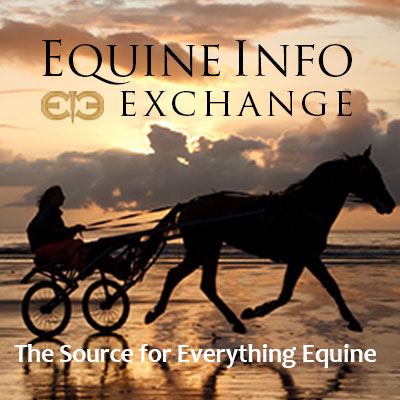Health & Education
We all want the best care possible for our horses. The Heath & Education section covers both Learning Institutions, Organizations as well as many sources for equine assistance including Veterinarians and Farriers.
For those who want a to formally study horses, the Education section includes College Riding, Equine Studies, and Veterinary Schools. Learn about the wide variety of horses in the Horse Breeds section. Supplements and Treatments Therapy are also included in the section.
Everyone can learn from Fine Art and there are some specialty Museums that might surprise you.
Horses as a therapy partner enrich the lives of the disabled. These facilities are listed in our Therapeutic Riding section. To help children and young adults build confidence and grow emotionally, please see the resources available on the Youth Outreach page.
Looking for a place to keep your horse? You can find it in the Horse Boarding section. Traveling? Find a Shipping company or Horse Sitting service if your horse is staying home!
Want to stay up to date with the latest training clinics or professional conferences? Take a look at our Calendar of Events for Health & Education for the dates and locations of upcoming events.
Do we need to add more? Please use the useful feedback link and let us know!
"Is there anything I can do to prevent pregnancy loss in my mare?" presented by Dr. Mandi de Mestre, professor of biomedical sciences at the Baker Institute for Animal Health at #CornellVet, recorded November 21, 2023 via Zoom.
⚠️ Please note: This presentation includes equine pregnancy loss images that may be upsetting to some viewers. Please view at your own discretion.
In this seminar, Dr. de Mestre discusses the possible reasons why a mare suffers pregnancy loss, including which ones are the most commonly found in clinical cases of pregnancy loss and what you should be looking out for. She highlights new findings on novel genetic reasons a pregnancy might fail and how such cases can be identified. The talk ends with how we can use all this information in the management of mares to avoid or minimize the impact of pregnancy loss on mare fertility.

Help support healthy hooves with these insights.
Regular hoof care is of upmost importance to your horse’s well-being and performance, whether you’re an avid competitor or weekend trail blazer. For insights on hoof care and answers to some common questions, we visited with Valley Vet Supply Technical Service Veterinarian, Tony Hawkins, DVM.
For a healthy horse, hoof care is important. But, why?
“If their hooves are not well-maintained, horses can have significant stress on their ligaments, including the suspensory ligament, which can cause prominent lameness issues,” warns Dr. Hawkins. “Proper hoof care also helps address cushioning and proper biomechanics of the horse; anytime we throw that off, horses can be predisposed to conditions like navicular syndrome -- a degenerative condition of structures within the horse’s heel, often leading to chronic forelimb lameness.”
How often do horses need their hooves trimmed?
Horse hoof trimming needs will differ depending on the individual horse, and even the time of year. With this in mind, a good rule of thumb is to trim or shoe a horse every six to eight weeks. A University of Minnesota Extension report authored by Mary Boyce, DVM, states, “The horse’s hooves grow slower in the winter,” and during this time a trim or new set of shoes may only be needed every six to 12 weeks.
Do horses need to be shod?
Some horses need shoes on them. Horse owners will need to consider conditions both at home and when traveling, such as when standing on hard concrete and gravel, which can make horses more tender-footed.
Hoof boots are becoming all the more popular, with great designs like Easyboots for horses.
What is the common hoof ailment, thrush in horses, and how does one recognize it?
Dr. Hawkins says, “Thrush is a mixed bacterial, fungal infection of the horse’s frog (triangular in shape, extending mid-heel to toe). Thrush happens when horses’ hooves get wet and stay wet for extended periods. Their soft tissue of the hoof becomes weak and the bacteria, which is just naturally present in the environment, can invade that susceptible tissue, causing an infection further into the frog sulcus area. If we don't stay on top of it, thrush can become a huge problem before we really even realize there is one. If we have thrush issues, and wet conditions, we really need to focus on getting horses to a dry area. That's going to be a very important part of their therapy. You can put all of the products on it possibly that you want, but if we don't dry out that tissue, we may not see a successful treatment response.”
Thrush in horses’ hooves can cause them to be sore and tender-footed. If the horse isn’t treated, the condition can be drastic. The condition is especially prevalent during seasons with more rainfall. Shop thrush medication.
What causes hoof cracks in horses?
The culprit of hoof cracks in horses, according to the University of Minnesota Extension, includes dry or inconsistent weather and rainfall, extended trimming intervals and poor hoof health. Learn about the different kinds of hoof cracks and how to prevent them.
How can hoof supplements help?
A horse’s hoof health benefits from specific ingredients in hoof supplements, including Biotin, Iodine, Methionine and Zinc.
Dr. Hawkins says, “Hoof supplements help support the right level of vitamins (most importantly, Biotin), minerals and nutrition that support strong, healthy hoof growth. In return, that's going to help prevent issues, such as hoof cracks, and support strong laminar attachments to help horses avoid laminitis and founder issues.”
When should horse owners involve their veterinarian?
“Getting a veterinarian's input is valuable when it comes to challenges impacting the hoof,” Dr. Hawkins said. “Many hoof issues can preface systemic disease processes; getting a complete physical exam on the horse will help rule that out. For example, laminitis is considered a sign of Cushing's disease, also known as PPID (Pituitary Pars Intermedia Dysfunction), which is the most common hormonal disorder affecting horses and ponies. If it's severe enough, their veterinarian could recommend getting some radiographs of the leg and lower foot, which would be valuable information for their farrier to have and best correct the problem.”
Continue reading about horse hoof health in this Q&A with a longtime farrier. Shop hoof supplements available from veterinarian-founded ValleyVet.com.
This article originally appeared on Valley Vet and is published here with permission. Valley Vet Supply was founded in 1985 by veterinarians for people just like you - people who want the very best for their four-legged friends and livestock.
All photos courtesy of Valley Vet.
There are more informative articles in our section on Health & Education.
The EIE Amazon Store also offers great products for Hoof Care. Check it out!
- Risk Management is a Must
- Correct Riding Helmet Adjustment with Julie Goodnight and Christy Landwehr (4:26)
- Horse Chiropractor
- Observing Horse Behavior in Restricted Grazing Scenarios
- Horse Acupuncture
- When EPM Strikes
- Evaluating Pasture Quality for Horses
- Winter Water Requirements for Horses
- Enjoy a More Serene Ride
- Lean Times, Lean Horses? Three Easy Ways Purina Can Help
- Purina's MQ Systemiq Probiotic Supplement
- Beyond Expectations - Book Trailer
- Education - Equine Health
- Health & Education Services
- Finding My Stride with Therapeutic Riding - An Excerpt from Beyond Expectations
- Celebrity Supporters of the Seen Through Horses Campaign! (1:56)
- On to Safer Pastures: Protecting Horses from Poisonous Plants
- Survey Finds Half of Horse Owners Unaware of Lesser Known Stressors
- Study: Intestinal Microbiome of Foals May Predict Future Racing Success
- Intra-articular Approaches to Osteoarthritis - Cornell Equine Seminar (Oct 2024)

































